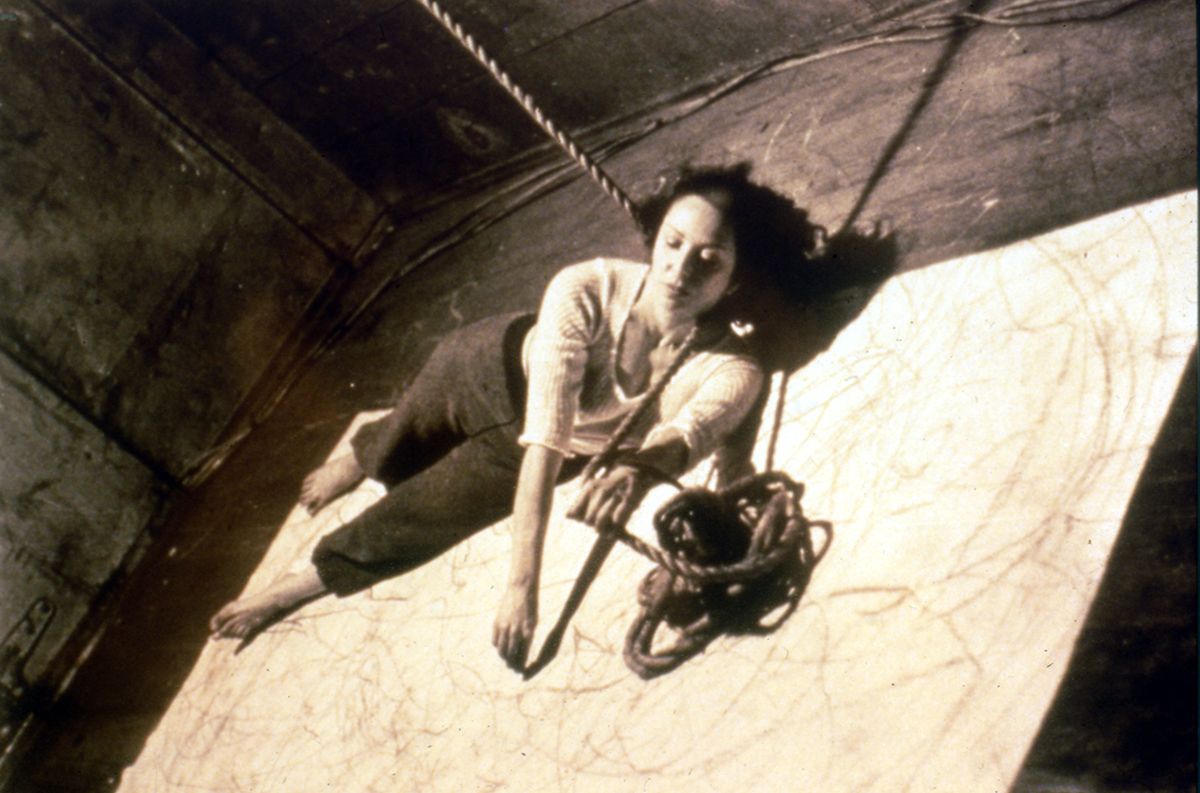You might be surprised that Carolee Schneemann: Kinetic Painting at MoMA PS1 (until 11 March 2018) is the first comprehensive US retrospective on the artist, a major figure in the New York avant-garde scene of the 1960s-70. The two-floor show delves into six decades of Schneemann’s work, starting with her early paintings in the 1950s (she trained in the medium) and also includes documentation of performances, drawings, mixed-media works, assemblages and artist’s books. The themes she explores feel as relevant as ever, such as feminism and the body, in works like the performance Scroll (1975/77), in which she pulled a scroll, printed with a manifesto which she recited, out of her vagina, or war and violence in works like the multi-media installation War Mop (1983), a mop that hits a monitor flipping between videos from the Beirut tourist bureau and images following Israel’s 1982 invasion of Lebanon.
Transformer: Native Art in Light and Sound at the National Museum of the American Indian’s George Gustav Haye Center (10 November-6 January 2019) displays video, projection, sound and installation works by ten Native artists from Canada and the US, including Raven Chacon, Julie Nagam and John Corbett, that show how new media can express tradition and cultural continuity. One especially compelling (and beautiful) work is the light installation The Harbinger of Catastrophe (2017), by Marianne Nicholson, an artist from British Columbia of Kwakwa̱ka̱’wakw and Scottish descent. Pictographs projected through an etched-glass box in the centre of a room slowly rise and fall as the lightbulb in the glass moves up and down, which the artist says mimics the tide of a flood, and shows how all of us are involved in or affected by climate change. She has also nodded to local Native history—and the museum’s location near Wall Street—with two figures who represent the sale of the island of Manhattan to the Dutch colonial governor Peter Minuit for a stingy sum.
Tina Kim Gallery has staged the first New York solo show of the South Korean multimedia artist and documentary film-maker artist Minouk Lim, Mamour (until 22 December). It includes three bodies of recent work by the artist that deal with history and trauma, particularly in North and South Korea, but which Kim says are also deeply personal. Sit for all 13 minutes of the two-channel video projection The Possibility of the Half (2012), which shows slow-motion video footage of North Koreans reacting to the death of Kim Jong-il in 2011, side-by-side with footage of South Koreans reacting to the death of the former president Park Chung-hee in 1979. In the 2015 installation Running on Empty, seven sculptures remake the equipment of a television production crew in organic materials such as wood and wax. And you can stare into the mesmerising work Black Hole, a standing light reflector that has been densely layered with soft black feathers, creating a strange, almost sublime depth.


